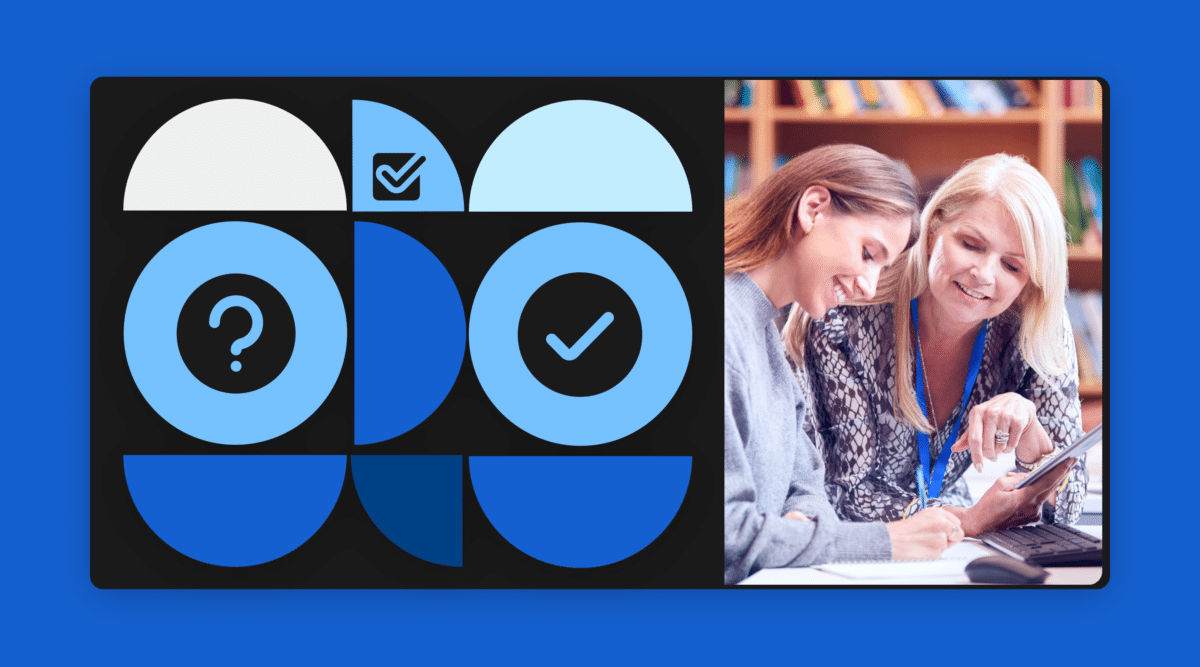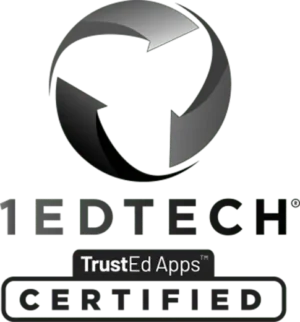
Jennifer Wood, 4th grade ELAR teacher in Richardson ISD in Texas, shares ideas for goals during coaching cycles and guiding questions to support creating your own coaching checklist when working with teachers.
As educators, we are inundated with ideas, research, data, and overall knowledge of all sorts. We have so many tools and access to information that it can, at times, become overwhelming and daunting. While we’re growing into well informed educators, we need to make sure we aren’t forgetting foundational pieces along the way.
Coaching guides can be used to take a coach and teacher through a cycle to look at data, discuss and plan content, check in, adjust, and continue on to set goals. The piece that’s often missing that we need to add to these guides is a checklist. Not just any checklist, but one made up of those essential pieces that, if not in place, can change student outcomes. I prefer these to be targets that an educator must hit in order to get to the desired goal.
Creating a Checklist
As coaches, we often focus a coaching cycle on school academic goals and data that are measured by universal screeners and assessments. This is, of course, wise and essential as goals should always be tied to the growth of the students and the school. However, there are areas that can’t be forgotten in planning and coaching that without attaining student and school-wide growth will be even more challenging; this is where a checklist comes in.
Here’s a list of items to consider when creating your coaching checklist:
Classroom Management
Classroom management is crucial in engaging students and the time spent on set tasks. When working with a teacher on classroom management, some good questions to ask are:
- What is your classroom management process?
- If I’m in your classroom, what tools do you use to keep students on task or get quiet that I should follow?
- Are there specific ways you redirect?
I like to use questions that focus on the teacher to help them reflect on what’s currently happening to further understanding.
Relevance/Expectations
Students are naturally more engaged in content when they fully understand what is expected of them and how it’s relevant. While we often instruct on content because that’s what the standards are, we often forget about those essential chats with students about what they will be able to do with this new knowledge and how it may be important to them. Here are some questions for expanding student relevance and expectations:
- What will you use to connect the students to the lesson/unit/topic?
- How will you grow student interest in this topic?
- Is there a tool or resource that the students may connect to in order to better engage?
- How are the expectations and timelines posted or given to students?
Differentiation and Struggling Students
As the class moves forward there may be students who don’t move at the same rate as others. It’s part of the instructional process to include differentiated content and plan for extra time for students struggling to grow. When your coachee is faced with students who aren’t meeting standards as fast as others, ask:
- How do you meet the needs of students that fit in tier 2 and tier 3 usually?
- What are you building into the unit or lesson for students who may struggle?
- Can you walk me through the differentiated options for students?
Student Feedback
We all need some type of feedback to learn about things we need to improve, adjust, or stay on track with. As instructional leaders, we often move at lightning speed with content simply because there’s a lot to get through in a day, week, or even year! Student goal-setting is a great way for students to own their learning and there are many great tools to help students do this. As a coach, we just need to “check” how or if this is happening as often as it needs to by asking:
- How do you talk regularly with your students about their work?
- What is your feedback schedule or method?
- How can I support you in giving feedback to students during this cycle?
- How do students know how they’re doing and what to adjust?
I often feel silly asking teachers if all of these things are in place because they are foundational. Even worse, by asking these fundamental questions, teachers can easily take them the wrong way as well. If I ask if one of these are in place, a teacher may not receive me very well and will often answer with a curt “yes.” As a coach, I’m only in the room for a limited time; while classroom management is evident in many cases, I may not see feedback conversations or be able to measure student connection to the content. I’ve tried to craft my conversation to ask, “how do they?” or, “how does this look in your classroom?” beginning with the assumption that these things are in place. It’s important to ask teachers how they measure if these essentials are working in the classroom.
Sometimes asking about things like how a teacher’s students receive continuous feedback has led to some wonderful conversations and added focus to engage the students in their learning to go along with the academic goal.
Final Note
How many times have we all done things and skipped a few steps to get there? We don’t always do it knowingly since we are busy working towards the outcomes and goals. As Atul Gwande mentions in his book, Checklist Manifesto, the sheer volume of knowledge and information we have is more than we can execute all the time.
When thinking of your own checklists of guiding questions to use with your coachees, it can’t hurt to make sure these things are all in place. As a bonus, the conversations may be enriching, helping you to better know and connect with the teacher you are partnering with!
About Our Guest Blogger
Jennifer Wood has worked in education for over 20 years in Illinois, with the past 5 years spent as an instructional coach at a K-5 bilingual elementary school in Rockford, IL. With an upcoming transition, her next adventure will be as a 4th grade ELAR teacher in Richardson ISD in Texas. Mrs. Wood graduated from the University of Evansville in Indiana and has passions for reading, learning, building relationships, and supporting learners of all ages! She is married to her husband, Mark, and has 3 amazing kids! Follow Jennifer on Twitter @u2woods
Stay Connected
News, articles, and tips for meeting your district’s goals—delivered to your inbox.




















